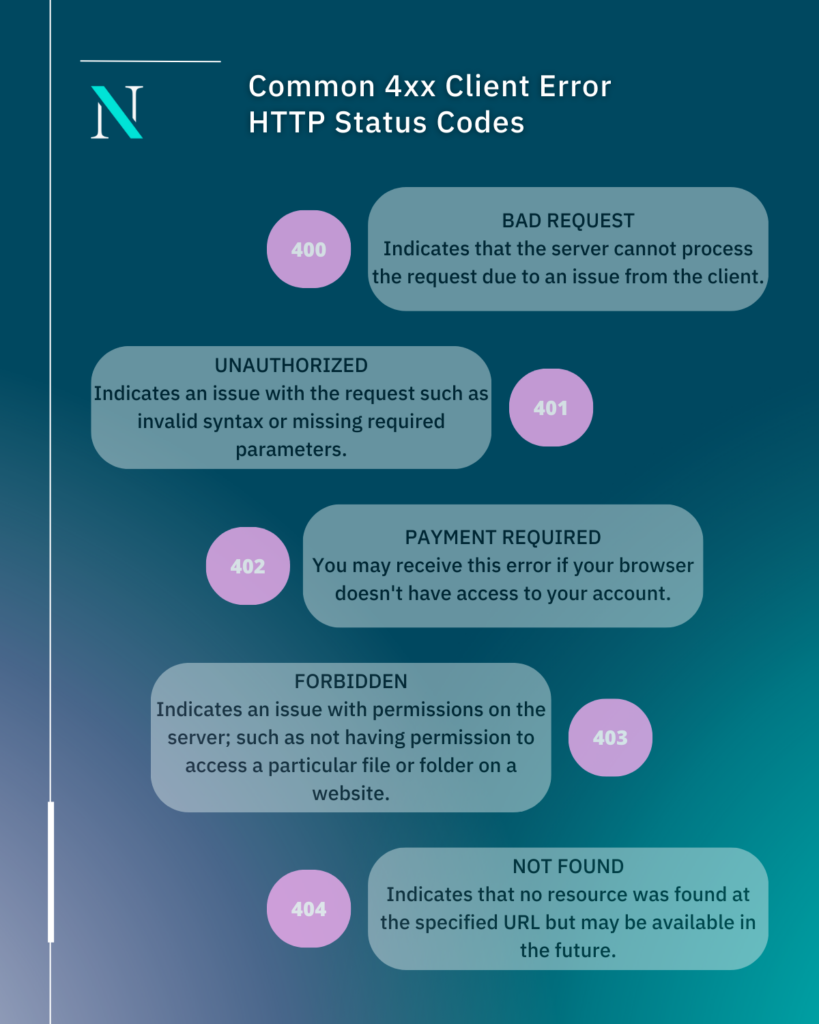In the digital landscape that is the internet, where data travels across the globe in mere milliseconds, every interaction is governed by a complex web of protocols. Among these, the HTTP status codes stand as silent messengers, communicating the outcome of every request. They silently guide our online experiences, often unnoticed until an error disrupts our seamless browsing.
In this blog, we delve into the intricacies of these status codes, shining a spotlight on the elusive HTTP 402 status code to explore how blockchain technology offers a promising solution to the challenges it presents.
What are the HTTP error codes?
The 4xx series of HTTP errors serve as a sentinel, raising red flags when client-side troubles arise. We can recite codes like 400 (Bad Request), 404 (Not Found), and 403 (Forbidden) from memory. These errors or codes signal barriers that interrupt the flow of our digital lives.

But what about HTTP 402? The lesser-known HTTP 402 is a code that has been overlooked despite its potential to reshape online transactions.
For most, the 402 code is rarely seen in action. It’s a vestige of a past where visionaries like Tim Berners-Lee and Marc Andreessen foresaw browser-based micropayments revolutionizing the web. In this narrative, 402 stood as an insight into a future where even the smallest transactions could be conducted seamlessly.
But history took a different turn. The plans were never realised, primarily due to the practical challenges of payment processing. Exorbitant transaction fees made the notion of small payments unviable, deterring widespread adoption. Despite the vision, barriers remained insurmountable, leaving 402 dormant in the annals of the internet’s evolution.
And then, blockchain technology emerged, offering an elegant solution to the problem of microtransactions. It’s here that the HTTP 402 error finds renewed relevance, poised to unlock a new era of financial empowerment. With blockchain at its core, the internet can finally realize its potential to facilitate small transactions with minimal friction.
Blockchain’s intrinsic qualities of distributed data and immutability make it an ideal candidate to resurface the concept of micropayments. Through the HTTP 402 status code, the door to a world where users pay for the exact value they consume, and creators are fairly rewarded for their contributions creaks open. This is a vision that transcends the barriers of transaction fees, enabling a decentralised network to streamline the exchange of value.
Moreover, blockchain’s potential isn’t limited to solving the challenges of microtransactions alone. It embodies the principles of transparency, security, and efficiency, qualities that hold the key to revolutionising how transactions are conducted across the internet. Beyond mere payments, blockchain paves the way for a more equitable and accessible digital realm.
As we contemplate this evolution, we find ourselves at the crossroads of two eras. The legacy of HTTP 402 hints at what could have been, while blockchain technology offers a fresh start. With its capabilities, we can envision an internet where content creators are compensated, where premium content is accessible to all, and where innovation in content delivery thrives.
In last month’s Bitcoin Masterclass, we revisited the Millicent Protocol. First proposed in 1995, it was designed to support digital payments costing less than a cent. Although it lacked double spend protection and immutable timestamps, it paved the way for Bitcoin, where our Chief Science Officer, Craig S Wright, made strides in resolving these issues. He developed Bitcoin to solve these problems.
At nChain, we envision a future where the internet’s potential is fully realized through a peer-to-peer layer for payments. By leveraging blockchain’s security and efficiency, nChain aims to create a seamless micropayment ecosystem that benefits both users and content providers. This vision aligns perfectly with the pursuit of a better next-gen internet, where frictionless, secure, and transparent transactions become the norm.
As we embark on this journey to complete the internet, the integration of blockchain technology and micropayments stands as a beacon of hope, promising a world where the exchange of value is seamless, equitable, and rewarding for all parties involved. Together, we can pave the way for an internet that is not only interconnected but also financially inclusive, unleashing its full potential for the benefit of humanity.
Let’s reflect on the journey that HTTP status codes have traversed. The HTTP 402 error, once relegated to the sidelines, is now significant in the realm of online transactions. Blockchain technology offers the means to complete the internet’s architecture. As we embrace this evolution, we step towards an internet that is not only interconnected but also financially inclusive, an internet that unleashes its true potential for the benefit of all.
Follow us on our social channels for more insights:
LinkedIn
Twitter